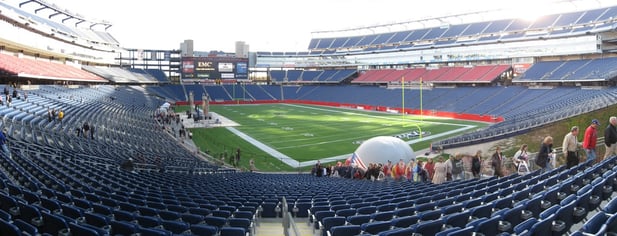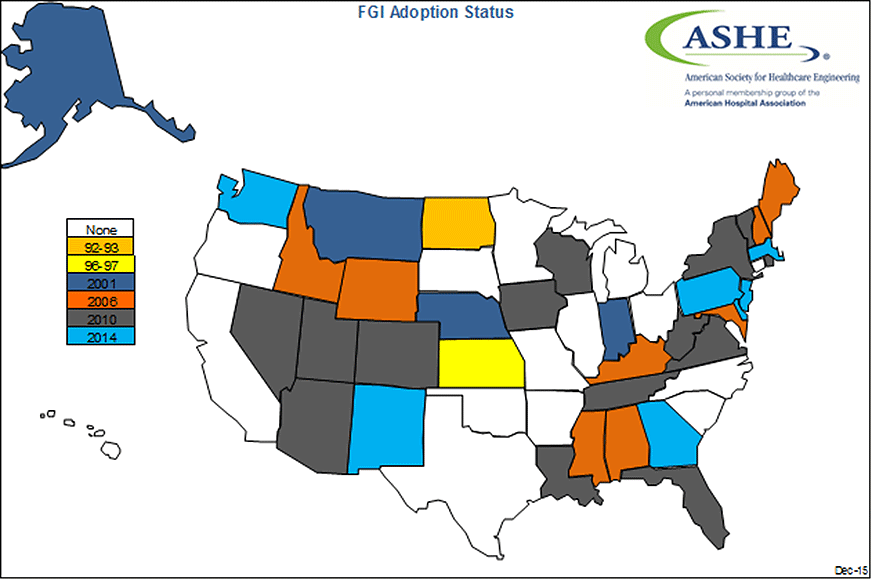Given that we're solidly into football season, we thought it was a good time to revisit this post by Katie from last year about stadium energy efficiency. Enjoy.
Originally Posted November 12, 2015
After recently attending a New England Patriot’s football game at Gillette Stadium in Foxboro, Massachusetts, I was overwhelmed by the size of both the structure and the population density served during the four plus hours that the game is taking place. The relatively new Gillette Stadium is also a completely open configuration located in a cold climate. Unsurprisingly, my thoughts immediately turned to energy consumption and sustainability.

I was intrigued and decided to read up on whether or not large scale arenas are pursuing energy efficiency measures, especially now that many older stadiums are being demolished and replaced with larger more elaborate stadiums. I was happy to find that energy efficiency is a stated priority for most organizations. I want to share what I've found about how energy is used in a stadium and identify several overarching energy efficiency measures that most stadiums are incorporating into new designs as well as in upgrades to older stadiums.
Many Opportunities for Efficiency
There are many systems related to a stadium that can benefit from energy optimization: heating and cooling, ventilation, vehicle exhaust (garages), domestic water (plumbing), emergency power (generators), building automation systems, kitchens and, believe it or not, turf heating (just to name a few). So how much energy does a stadium actually use during peak hours?
One of the largest NFL stadiums is the AT&T stadium, home of the Dallas Cowboys. This is a fairly new stadium with a retractable roof which allows for temperature control during extreme warm or cold weather. An article in Wall Street Journal states that “during moments of peak demand on game day, the 80,000-seat stadium may consume up to 10 megawatts of electricity.” This equates to powering approximately 3,600 homes. And some college stadiums have an even larger capacity than an NFL stadium! However keep in mind that the Cowboys, like all NFL teams, only play games at their home field eight times per year during regular season. Here are a few measures that stadiums are implementing to help offset their footprint:
- Automated Control System (also known as BAS) – Because stadiums are normally only used for sporting or special events, the required occupied schedule is a very short time period of the year. Therefore, an automated control system allows better control over mechanical equipment by using setbacks (or changes in airflow, temperature, and other setpoints during unoccupied periods designed to save energy).
- Efficient Lighting Systems – Stadiums are installing efficient lighting fixtures. In addition to efficient lighting, some stadiums are using an addressable lighting system, which allows for dimming of certain fixtures during peak demand or when daylight levels are high.
- Water Efficiency – To reduce water consumption, stadiums are installing low flow water fixtures (toilets and urinals) as well as efficient irrigation systems where natural grass is still used.
- Renewable Energy – Understanding that the load is extremely high during an event, many stadiums are taking advantage of alternative energy such as wind turbines and solar panels to offset their energy usage.

Although stadiums use large amounts of energy, there is a significant opportunity to make them more efficient and to take advantage of the periods when the structure is unoccupied. I know American Football will continue to attract large quantities of spectators and the necessity for larger stadiums will grow. I look forward to seeing how designers and engineers will change their approach to stadium design in order to effectively reduce energy consumption.
For further reading, I recommend checking out the this post blog by the Alliance to Save Energy, from 2014, which lists the top five energy efficient football stadiums, how they got there, and the reductions to their utility bills and carbon footprint.



